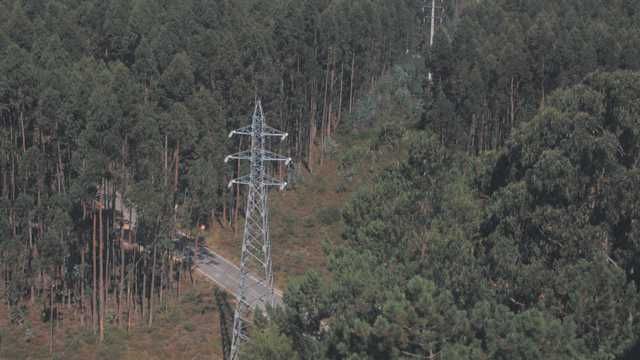Albatroz Engineering Develops Automated, Real-Time Power Line Inspection System
"During the first test flight, we discovered a bug in one of our algorithms. We opened up MATLAB and solved the problem while in flight. In 10 minutes our data acquisition and processing algorithms were working fine and we were able to carry on with the trial. It was very impressive. "
Challenge
Solution
Use MathWorks tools to acquire, visualize, synchronize, and interpret data from multiple sources in real time.
Results
- Development time cut by at least 50%
- System accuracy near 100%
- Inspection costs reduced by 90%

To ensure reliable electric power distribution, utility companies must conduct periodic inspections to identify trees and other obstacles near power transmission lines and check for physical deterioration of the conductors or insulators. Examining the lines from the ground or from an aircraft, even trained experts can provide only subjective estimates of the distance between hazards and power lines. Multiple passes are often required to complete an inspection, making the process expensive and time-consuming.
Albatroz Engineering has developed the Power Line Maintenance Inspection system (PLMI), an automated, real-time system that integrates all inspections and provides exact distance measurements. Built using MathWorks™ tools, PLMI uses sophisticated data segmentation algorithms to analyze LIDAR (Light Detection and Ranging) data and captures infrared, ultraviolet, and video camera images.
"MATLAB proved to be the ideal platform to develop, test, and analyze several different image acquisition and signal processing algorithms," notes Alberto Vale, chief research and development engineer at Albatroz Engineering. "With MATLAB, the time between idea and implementation is very short. As a result, we developed our first working prototype in less than six months, anticipating our time to market by three or four months."
Challenge
Albatroz Engineering required an integrated development environment for data and image acquisition, visualization, signal processing, and data synchronization. "We needed to acquire data in real time from digital cameras and GPS receivers, as well as LIDAR sensors, amounting to a total bandwidth of approximately 500kB/s" explains Vale. "Our engineers needed to synchronize and visualize all this data, process it, and then present it clearly to our customers in the production system."
To attract potential customers, PLMI would need to deliver accurate, quantitative results in a single pass. "Our customer specifications require the system to detect at least 95% of the power line hazards identified by a trained expert while providing exact distances between the hazard and the lines," Vale explains.
Solution
Albatroz Engineering used MATLAB® and several companion toolboxes to develop, prototype, and implement production versions of PLMI.
To build the early prototypes, the Albatroz team used MATLAB to acquire LIDAR data via TCP/IP and GPS data via a serial link. They used Image Acquisition Toolbox™ to capture images from a standard Web camera with USB link. In the production system, this camera was replaced by higher resolution cameras with Firewire (IEEE-1394) link.
The team used MATLAB and Signal Processing Toolbox™ to process LIDAR signals. Using convolution functions from Signal Processing Toolbox, they developed data segmentation algorithms that interpret the cloud of points produced by LIDAR and identify power lines, trees, buildings, and other obstacles. When these algorithms identify a potential hazard, an alert is issued in the interactive interface showing geometry from LIDAR, image from video, and location from GPS.
A higher end system for airborne operation, featuring sustained data rates up to of 6MB/s, combines C++ real-time multithread acquisition, SQL engines, algorithms developed in MATLAB, then implemented in C++ and Web services. It includes a four-video, two-audio channel geo-referenced recorder from a Portuguese partner.
Albatroz Engineering used MATLAB Compiler™, Database Toolbox™, and MATLAB graphical user interface (GUI) building tools to create a stand-alone application for post-processing mission data. Using this application, Albatroz Engineering clients can conduct in-depth analysis of the data gathered on multiple missions and create comprehensive multimedia reports.
The PLMI system is currently in use in Portugal.
Results
Development time cut by at least 50%. "With MATLAB, we had a prototype in test flights within four months and a working version within six months,"explains Vale. "Development would have taken two or three times longer using C or C++."
System accuracy near 100%. "For high-voltage lines (50kV and above), our measurement system outperforms visual inspection by seasoned technicians, has less than 5% of false alarms and very rarely misses an issue," says Vale. "In practice, it often identifies close to 100% of potential hazards."
Inspection costs reduced by 90%. "The system that we developed with MathWorks tools integrates data from multiple sources to optimize each helicopter flight and perform multiple inspections simultaneously," says Vale. "As a result, it costs ten times less to perform an inspection with PLMI than with a standard airborne LIDAR survey."